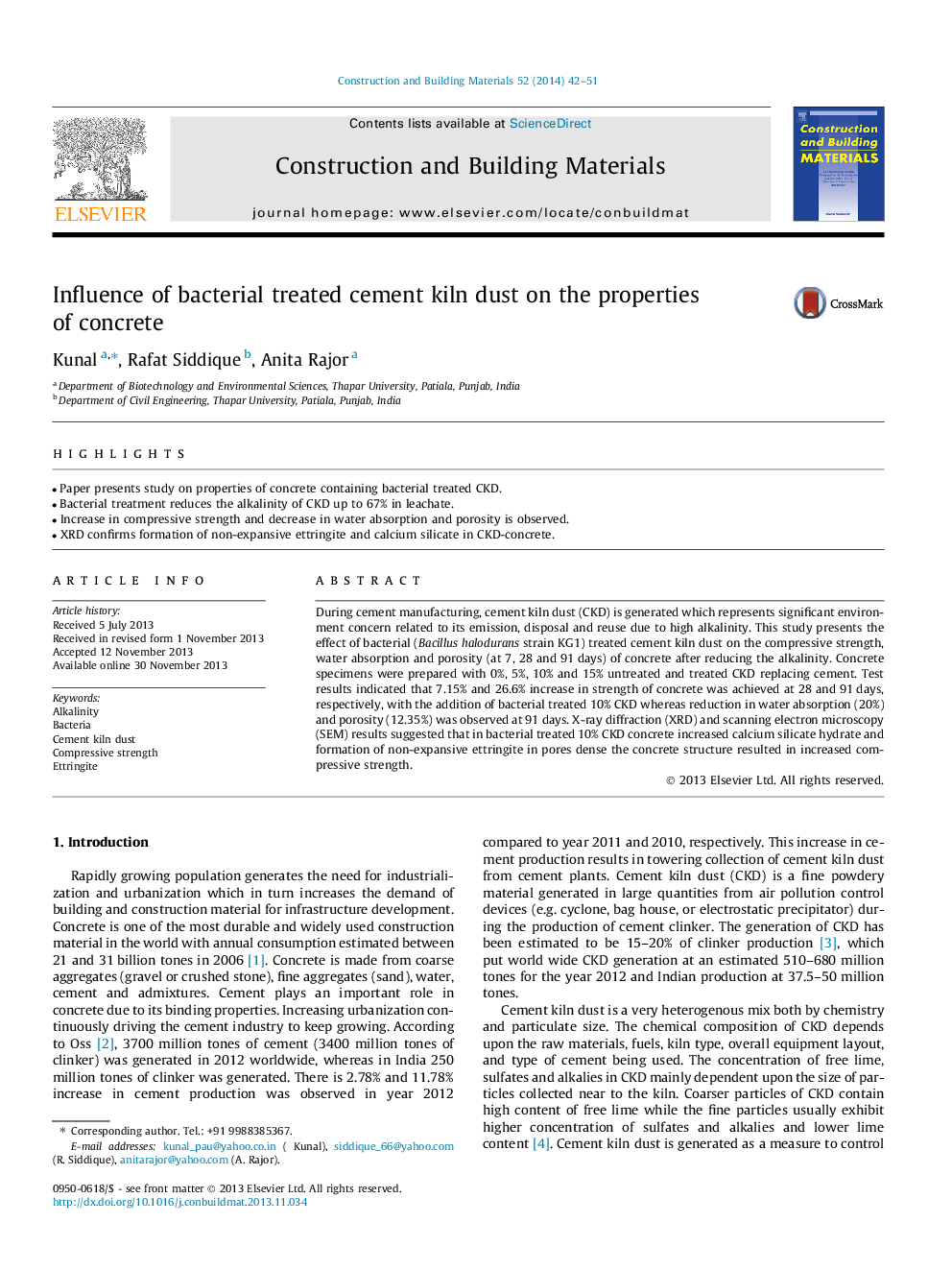| Article ID | Journal | Published Year | Pages | File Type |
|---|---|---|---|---|
| 6724129 | Construction and Building Materials | 2014 | 10 Pages |
Abstract
During cement manufacturing, cement kiln dust (CKD) is generated which represents significant environment concern related to its emission, disposal and reuse due to high alkalinity. This study presents the effect of bacterial (Bacillus halodurans strain KG1) treated cement kiln dust on the compressive strength, water absorption and porosity (at 7, 28 and 91Â days) of concrete after reducing the alkalinity. Concrete specimens were prepared with 0%, 5%, 10% and 15% untreated and treated CKD replacing cement. Test results indicated that 7.15% and 26.6% increase in strength of concrete was achieved at 28 and 91Â days, respectively, with the addition of bacterial treated 10% CKD whereas reduction in water absorption (20%) and porosity (12.35%) was observed at 91Â days. X-ray diffraction (XRD) and scanning electron microscopy (SEM) results suggested that in bacterial treated 10% CKD concrete increased calcium silicate hydrate and formation of non-expansive ettringite in pores dense the concrete structure resulted in increased compressive strength.
Related Topics
Physical Sciences and Engineering
Engineering
Civil and Structural Engineering
Authors
Kunal Kunal, Rafat Siddique, Anita Rajor,
